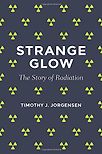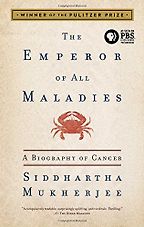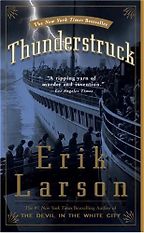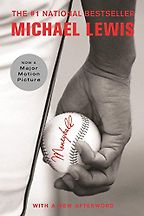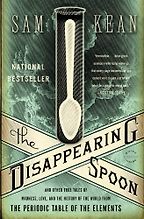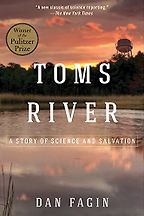Can you explain what radiation is?
It’s energy on the move. Be it through free space or through matter, it’s little packets of energy that are moving through things.
Are there different types?
There are two general groups of radiation. There’s ionizing radiation and non-ionizing radiation and sandwiched in the middle is visible light. People don’t always understand that visible light is a type of radiation but it is, and it’s the only type that we can see. On either side of that are radiations that we can’t see.
The ionizing radiations have the most energy, they can rip electrons off atoms. Those are the ones we’re most worried about because that ripping of electrons damages DNA and sends us on a cascade of events towards cancer. The non-ionizing radiations—cellphone radiation and radio waves and things like that— don’t have the energy to do that. Some people worry that they could cause cancer or other health effects, but they don’t have enough energy to cause ionizations or other chemical damage. So if they do cause problems, it is in some mysterious way that we can’t understand. We can’t rule out these types of radiation as being cancer causing, but on the other hand, we have no strong evidence that they are.
Radiation is often seen as something that’s mysterious and scary. Why do you think that is?
I think there are three reasons. The first reason is you can’t see it, you can’t smell it, you can’t taste it, you know it’s there but it’s like a spirit. I think that makes it fearsome to people. The other thing is people associate radiation with atomic bombs and cancer, which are two fearsome things. And then they think it’s too difficult to understand and that they have to rely on experts to protect them, and that makes them feel vulnerable, because they don’t really understand it, they are just being directed by others.
In your own book, Strange Glow, are you hoping to demystify radiation?
I’m not necessarily trying to make people less fearful about radiation, but I’m trying to rearrange their fears. Some of the things people fear most about radiation, for example cellphones, are really not a public health problem. But other risks are underappreciated by the public, such as nuclear terrorism. In New York City now, they have X-ray scanners that go up and down the streets looking for uranium and other highly enriched elements that could be used for terrorism and nuclear bombs.
“Some of the things people fear most about radiation, for example cellphones, are really not a public health problem. But other risks are underappreciated. ”
People are very concerned about this little bit of X-ray exposure, which is equivalent to scanners at an airport, and they seem less concerned about the very real threat of bringing nuclear materials into New York. I hope that after reading the book, people’s fears will line up closer to the reality.
Let’s get into your book choices – the first is Siddhartha Mukherjee’s 2010 book, The Emperor of All Maladies: A Biography of Cancer. Why did you choose this?
The book has to do with cancer, and radiation is of course closely associated with cancer. It has this dual personality of both causing and curing cancer. This book speaks to both of those aspects, and it does so from a human perspective. You see cancer through the eyes of the patients who are suffering from the disease, and you see it through the eyes of the physicians, who are frustrated in their efforts to cure people with the disease.
I thought that was a great way to explain some very difficult scientific concepts to the public so they could then use that information to meaningfully affect their lives. A tremendous amount of cancer biology comes through in that book through the eyes of the victims and the people up close and personal.
Did a particular story in the book stand out for you?
Mukherjee talks about what happened at the Dana-Farber Cancer Institute in Boston, where I did a fellowship. Dana-Farber is named after Sidney Farber and the Dana Foundation. When you’re there, there are reminders of Farber everywhere, on plaques and so on. So I already knew a little about Farber’s background and what he had achieved at the Institute over the decades of his leadership. But I didn’t know the interesting details about Farber’s scientific life, such as the fact that he was among the first to realize that more reliable methods to measure the size of tumours in the body were sorely needed for cancer research to make any progress, or that he pioneered the use of X-rays combined with drugs to treat pediatric cancers.
You take a historical approach in Strange Glow, too. How did radiation first come to be tried as a treatment for cancer?
Originally radiation was used in the correct way for the wrong reason. At the end of the 19th century, when X-rays were discovered, there were two types of physicians, the allopaths and the homeopaths. The allopaths believed in using noxious agents to drive disease out of the body, and the homeopaths had this idea that any drug or treatment that could cause disease symptoms could, in lower doses, reverse those symptoms. It’s not clear what the logic of that is, but because of that they gave very low doses of drugs and other treatments and they fractionated the dose, meaning they gave a treatment a little bit at a time, thinking that this would increase its potency.
The very first person to try radiation as a treatment was an American homeopathic physician named Emil Grubbe, in 1896. He fractionated the doses, and it turns out that this is the perfect way to deliver the dose to tumours, but not for the reason he thought. The main reason is because when you split the dose, the time between doses allows normal tissue to repair the damage, whereas the tumour isn’t very good at repairing itself.
“Some of the people who make the great breakthroughs are the newbies or naïve people, who either don’t know the scientific dogma or don’t care about it.”
Every time you give a break in the treatment the normal tissue repairs while the tumour doesn’t, and by fractionating over many cycles you can get a bigger killing effect in the tumour. So he did the perfect thing. He got great results for the wrong reasons. We were very lucky that a homeopathic physician founded radiotherapy.
There’s still an idea today that very low doses of radiation might be beneficial?
That’s right. The theory is called ‘hormesis’ and it’s promoted by a small group of scientists. They see radiation almost as a nutrient that stimulates cells and boosts their capacity for repair. But the evidence for this is extremely weak. The problem with proving it is that at low doses we have problems measuring risk at all. We can’t distinguish whether low doses of radiation are protective or harmful. But we do know the mechanism by which radiation produces cancer and, in theory, even one interaction with a cell could produce a cancer.
So, most scientists take the conservative route and assume that risk is simply proportional to dose. If you halve the dose, you halve the risk. What you then consider to be safe depends on how high a risk you are willing to accept.
Your second choice is Erik Larson’s 2006 novel Thunderstruck. What is it about?
Larson’s books often bring two narratives together, say a crime story and a technical story. Thunderstruck is set just before the First World War. Larson combines a true-life murder mystery—a London doctor named Harvey Crippen murders his wife and buries her body in the basement—with the development of radio by the Italian inventor Guglielmo Marconi.
It’s hard to see the connection between those two things and I’m not going to be a spoiler for people who want to read the book, but in the end he brings those two stories together. I chose this book because radio waves are a type of radiation, and I appreciate how Larson weaves technical information about radio waves into the story of Marconi’s life. He brings Marconi to life and helps readers to understand what his achievements were and why they were scientific breakthroughs.
Get the weekly Five Books newsletter
Often Marconi ploughed ahead, just like Grubbe did, with some very inaccurate ideas about how radio waves work. For example, he kept increasing the power that he used to transmit radio waves, thinking that with more power he could send them further. He ended up using thousands and thousands of watts when he first transmitted messages across the Atlantic Ocean in 1901, but if he had changed the wavelength just a little he could have achieved the same thing without such massive amounts of power because the waves would have skipped around the inner atmosphere to the other side of the Atlantic. That’s how we do it now, without huge amounts of power.
If you have ever used a short-wave radio, although those things tend to be antiques now, that’s how they work, they choose a wavelength that allows them to skip around the globe. Marconi had no understanding of that. In fact, physicists at the time told him his attempts at long-distance transmissions would never work, because it would be impossible for the radio waves to curve with the earth. But Marconi was getting results, so he just kept going.
What was Marconi’s breakthrough in understanding? What was he doing that no one had done before?
Scientists had predicted with mathematics that there should be such things as these long wavelength radio waves. So they’d been looking for them for years. The German physicist Heinrich Hertz finally discovered radio waves, and now we measure frequencies in Hertz units, to honor him. But at the time, radio waves were a scientific curiosity and people didn’t immediately realise that they could be used for communication.
At the time, we had the telegraph, which was all by wires. People would demonstrate radio waves using a parlour game. If you had sparks you could produce radio waves, so they used sparks to affect the orientation of metal filings, which would then ring a bell across the room. But nobody thought about developing that into a type of communication. It was Marconi who grabbed that and saw the potential for wireless communication. He left the physicists in the dust. He won a Nobel Prize for his work while they didn’t, even though they understood the physics better. In fact, in winning the prize, he even admitted he didn’t understand why this was working. But nevertheless it was.
He just ran with it.
Right, and I think that’s a theme you see a lot in science. Some of the people who make the great breakthroughs are the newbies or naïve people, who either don’t know the scientific dogma or don’t care about it, they just plough ahead and sometimes they are quite successful. Dogma is often ephemeral.
Radio has since revolutionized our communications so much, it’s hard for us to imagine life without it.
Originally, of course, radio communication was via dots and dashes, just like the cable telegraph. But people quickly saw how they could change the signals into voice. Voice radio became a staple throughout the world. By the 1930s, everybody had radios in their homes. How could you imagine not having one? It was transformative.
Let’s talk about your third choice, Moneyball: The Art of Winning an Unfair Game by Michael Lewis. It’s about baseball, so I’m intrigued to know why you have chosen it as relevant to radiation.
Any baseball enthusiast will know that there’s a type of baseball fan who is very interested in statistics. If you follow players or teams, people are always quoting statistics, most notably the batting average, or how many home runs a person hits. There’s a statistic for just about everything you can do on the field.
I’ve been a longtime baseball fan but I’ve not been a fan of the statistics, whereas a friend of mine whom I often go to baseball games with, he’s obsessed with the statistics and I’ve never understood why. Someone said to me, ‘you ought to read Moneyball by Michael Lewis, it’s about baseball statistics’. I was familiar with Lewis’s other books and I thought, baseball statistics?
But what Lewis does is he mixes the statistics with the life story of a manager, Billy Beane, from his high school days all the way up. Beane turned out to be a baseball genius because he realised that some of the numbers people dwelled on were really not important for predicting outcomes of games. Other numbers were more important. Beane managed his players completely by statistics, and he took his low-budget team, the Oakland Athletics, to an unprecedented series of successes that won him wide acclaim throughout Major League Baseball.
I like this book because statistics is a very dry subject, but Lewis makes the numbers come to life by integrating them into Beane’s life story. I thought I could use a similar approach in writing about radiation, because so much of radiation is statistics, particularly in estimating risk. It’s very dry and hard to understand, but I tried to use some of Lewis’s approaches to describe things in a way that I hoped would speak to people.
One example in Strange Glow that stood out for me was the story of the Japanese fishermen caught close to one of the US nuclear bomb tests at Bikini Atoll in the 1950s, and how their experiences fed into the debate about the health consequences of radioactive fallout.
Fallout is radioactivity that mixes with dust and then settles down on people. It’s the second consequence of nuclear weapons that is just as deadly as the blast radiation. But before the atomic bomb test in Bikini, we didn’t know much about the problem. That’s because at Hiroshima and Nagasaki there wasn’t much fallout; the bombs were detonated above ground so they didn’t kick up any significant amount of dust. When the tests were done at Bikini, the bombs were much larger, and they were detonated at ground level, so they kicked up a tremendous amount of fallout.
“Fallout is radioactivity that mixes with dust and then settles down on people. It is just as deadly as the blast radiation”
These fishermen were in the wrong place at the wrong time. They happened to be fishing downwind of these detonations. The fallout fell on them like snow, it was several centimetres thick on their boat. They didn’t know what it was all about. They returned home and all got radiation sickness, they were in hospital for a year and one of them died. This was the first time we really understood how bad fallout could be.
Your fourth choice is The Disappearing Spoon…and other true tales from the Periodic Table by Sam Kean. This is another science book driven by stories.
Kean reviews all of the elements of the periodic table and there’s a story associated with every element. He talks a lot about what makes things elements, what distinguishes one element from another and why those differences are important. I think he did a good job of letting people appreciate how big a difference a single proton can make in terms of the chemistry of an element. This is relevant to radioactivity too.
An imbalance of protons and neutrons is what causes radioactivity, and you have different radioactive elements that are composed of different combinations of protons and neutrons. Each of these radioactive elements has its own story, whether it’s radium or strontium or caesium. I appreciated how Kean described that, and I tried to use a similar approach.
What’s your favourite story of a radioactive element?
I do like the story of radium. The short version is that in the 1920s radium was mixed with fluorescent paint and put on watch dials so that they would glow in the dark. The unfortunate women who did the painting would often point the brushes in the corner of their mouths to make them sharp enough, because it was very detailed work. They ended up ingesting a lot of radium. The unfortunate thing about it was that radium’s chemistry is very much like calcium, and calcium, we know, accumulates in bone. People had known that for decades. There were predictions that radium would also go to the bone, but nobody acknowledged the similarity in chemistry between these two things. And unfortunately radium did go into these women’s bones, they suffered all types of bone problems, including bone cancers.
All of that could have been predicted by current knowledge of the chemistry of those elements, even without specific studies on radium. Strontium is in the same chemical family, we call them bone seekers. So when strontium was released after the atomic bomb blasts, scientists went back to the lesson of the radium dial painters. They were able to correctly predict what effects strontium would have on the body, based on knowledge of the chemistry of calcium.
That’s because all of the elements in the periodic table appear in columns. Everything in the same column has similar chemistry. So even as new elements were being discovered, you could predict their chemistries because you knew what column they would fall into.
And new elements are still being discovered now?
Virtually all elements existed at the time of the supernova that created the solar system. Some of them were so unstable that they decayed away very rapidly and no longer exist. But they can be artificially produced. So after scientists exhausted all the common elements and even all the rare elements, they started producing new elements by bombarding existing elements with subatomic particles: protons and neutrons.
One of the newer ones was named Roentgenium after Wilhelm Roentgen, who first discovered X-rays. In fact, I believe that another new element was announced just a few months ago. I don’t know what the limit to this is, but you take the elements you have and bombard them and look for these rare things.
“Virtually all elements existed at the time of the supernova that created the solar system”
These elements frequently have short half-lives, that’s what makes them rare. Things with very long half-lives, we find in the earth as common elements. For example, radium is constantly being produced by its parent, uranium, and it hangs around for well over 2000 years. But some elements have no immediate radioactive parent or have very short half-lives, so they’re gone.
Your last book choice is Toms River: A Story of Science and Salvation by Dan Fagin.
Toms River is a town in New Jersey, named after the river that flows through it. I lived in New Jersey, so I was familiar with this story a little bit before I read the book. A chemical company there was negligent for many decades in how it disposed of its waste. It held the waste in open pits in the ground, and much of this leaked into Toms River. Years later, there were some cancers in the town. This is a problem that we have with radiation and other types of environmental exposures. You have a group of people who come down with cancer in a particular geographical area.
It’s very hard to determine whether the cases are clustered because there’s something in that area causing the cancers, or it is simply a random association of cases. If you were to drop poker chips on the floor randomly you would see some of them grouped together and some spread far apart. So when you see a cluster you don’t know which it is, and that was the situation with Toms River. There seemed to be a cluster but it took a lot of work to determine if it was caused by the chemicals that had been released there.
A lot was at stake, many children had been exposed, there were liability issues, questions over who was going to pay for the clean up. Fagin won the Pulitzer Prize for this book and I think justly so. He takes us into some very sophisticated science but in an easygoing style that again is viewed through the eyes of the victims. At the end of day, it appears that there was a real association between the chemicals and the cancer, but the door is still open that it could have just been random. So it was somewhat of a statistical victory, but again there is always that uncertainty as to whether or not this association was real.
What Fagin really showed, though, is how things like waste, be it nuclear or chemical, and the community interact and how people’s lives are affected. People want answers and it is scientists’ job to give them those answers.
What lessons does Toms River hold for the future? If it is so hard to prove a causal link, then things like legal accountability become very difficult. How do we keep people safe from the damaging health and environmental effects of chemical or nuclear waste?
In the radiation community, we use a practice called ‘as low as reasonably achievable’. That means you don’t use any more of a potentially harmful material than you absolutely need to. You dispose of waste as best you can. You try to maximise benefits while limiting exposures. I think if there’s any lesson to be learned, it’s that at low doses we are not going to be able to say with certainty that this chemical or that radiation exposure caused this disease. We cannot do that. But we do know that risk is proportional to dose. If we limit the dose as much as possible we will minimize the risk. We have to have good industrial hygiene practices all the time—whether or not there’s evidence that certain chemicals cause health effects—because we can’t be sure that any of them do or any of them don’t.
Is that realistic? Presumably there will always be financial pressures pushing companies and organisations to cut corners, and there will always be human errors and failings. When countries consider nuclear power, for example, even though we might know in theory how to make that safe, can we be sure all of the necessary measures are going to happen?
With the routine use of nuclear power, there’s very little exposure to the public. There’s no release of radioactivity. It’s these catastrophic events that release radioactivity and endanger the public. We can take a lot of precautions against those. Take the 2011 nuclear disaster at Fukushima in Japan. The Japanese knew about the risk from earthquakes and tsunamis. They decided to build a sea wall and they decided to build it to the level of a tsunami that occurred in the 1960s. The trouble is, the 1960s tsunami was not a historically huge tsunami.
Five Books interviews are expensive to produce. If you're enjoying this interview, please support us by donating a small amount.
A historically huge tsunami happened in 879 AD, but if they had built the wall that big it would have cost too much. So someone somewhere decided that a 1960s level wall would have to be good enough. That’s ironic, because there are stones along the hillsides in Japan that mark the levels of different tsunamis. Anyone could walk around and see that the sea walls were below the level of these historic tsunamis. When you look down on a wall from the high water mark of a previous tsunami, I think that graphically and vividly portrays that you are assuming some level of risk for that.
These are decisions we have to make collectively as a society. How much risk are we willing to take for the benefit? Yes we can build a wall higher and higher but at some point the cost will become prohibitive. It’s a value judgment and we all need to be engaged in this. There are things that could have been done better at Fukushima. The wall could have been higher. The electrical components could have been placed on the roof, not the basement where they got flooded. There were some fail-safe mechanisms at the plant that didn’t work properly. But at some point we’re all going to have some risk.
And you can’t eliminate the risk by getting rid of nuclear because you have to replace it with something. If you replace it with coal you run the risk of mining accidents, air pollution, acid rain, lung disease. So there’s a cost no matter what you want to do, and society has to find a balance. One of the reasons I wrote Strange Glow is that people’s understanding of radiation is generally so poor they don’t have the necessary tools to make these kinds of decisions. But it’s not true that ordinary people can’t understand these things. The information just has to be presented in an intelligible fashion. Then people can decide if they want nuclear power, or solar power or coal.
How do you see our relationship with radiation changing in future? What are the big issues that we should worry about?
One is the use of radiation for health screening. Radiation has been used to screen for breast cancer, but hasn’t been as helpful as we’d hoped in diagnosing cases. Consequently the age for recommending breast cancer screening by mammography has crept up, because older people are more likely to have cancer and are therefore more likely to benefit. But we’re going to have to make some value judgments about whether such screening is worth it in long run. And not just because of the radiation exposure.
When women are screened and you have a false positive, something that looks like cancer on the X-ray and turns out not to be, that causes a whole bunch of additional medical tests that come with their own risks. And then there are false negatives, women who are given a clean bill of health and then turn out to have cancer. So we have to talk about these things. Radiation exposures in medicine are going up in general as more sophisticated diagnostic instruments are developed. These have benefits, they might protect you from exploratory surgery for example, but also risks.
Get the weekly Five Books newsletter
Another issue is whether we want to move forward with nuclear power in the wake of the disasters at Fukushima and Chernobyl. Some countries, like Germany, have decided no, others like France have decided yes. Then the last thing is the threat of nuclear terrorism, which, as I said, I think people underappreciate. We can debate how likely it is that terrorists could detonate their own home-made bomb. Certainly, it’s a possibility they could steal a bomb from an unstable nation. Perhaps the most likely scenario is a dirty bomb, which is radioactivity mixed with a conventional explosive.
It’s difficult to get enough radioactivity into a conventional explosive to cause serious health effects, but it would certainly scare a lot of people. And it would force the question of how much radioactivity in the environment are we willing to live with, when we return to that area? Because we’ll never be able to clean it up to where it was before, there’ll always be some residual radioactivity. People need to think about these things. What would be acceptable to me? It’s complicated, but I think the public has to be engaged in these decisions.
Five Books aims to keep its book recommendations and interviews up to date. If you are the interviewee and would like to update your choice of books (or even just what you say about them) please email us at [email protected]

